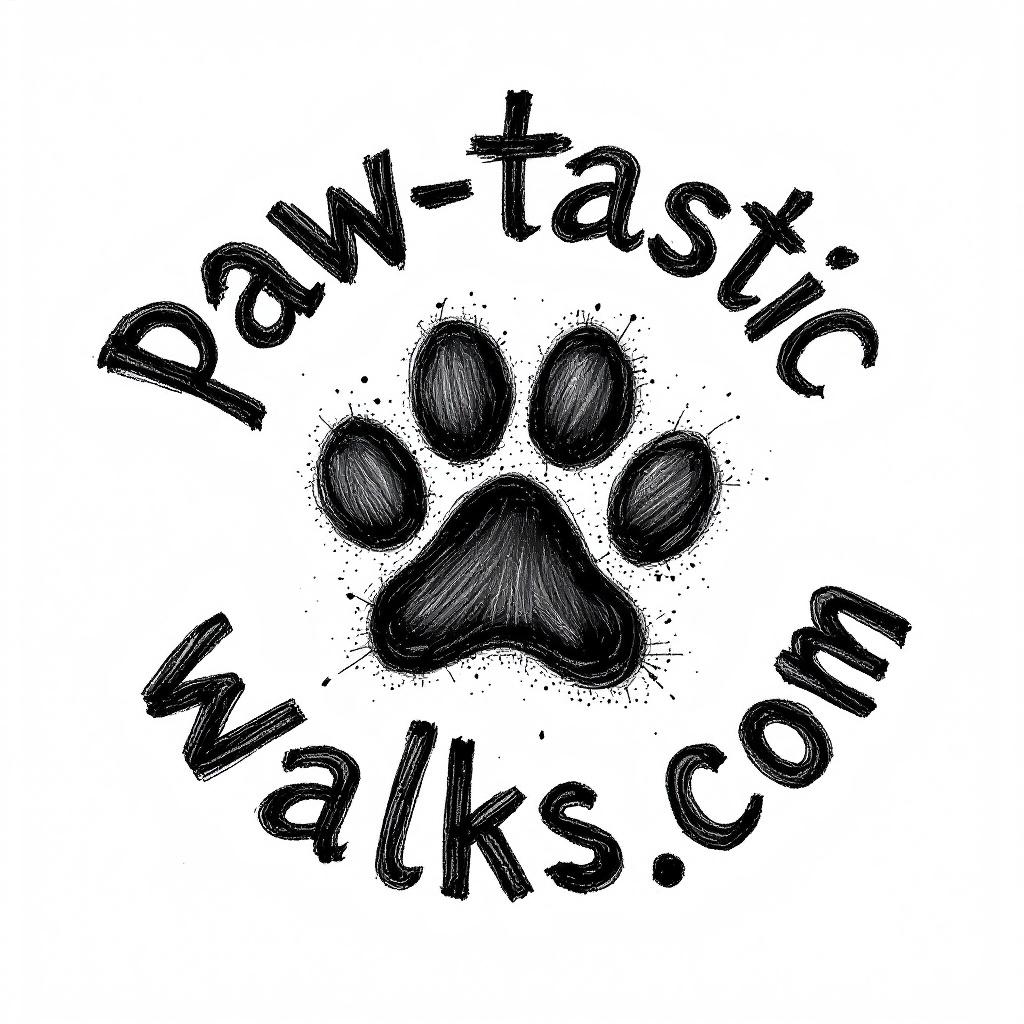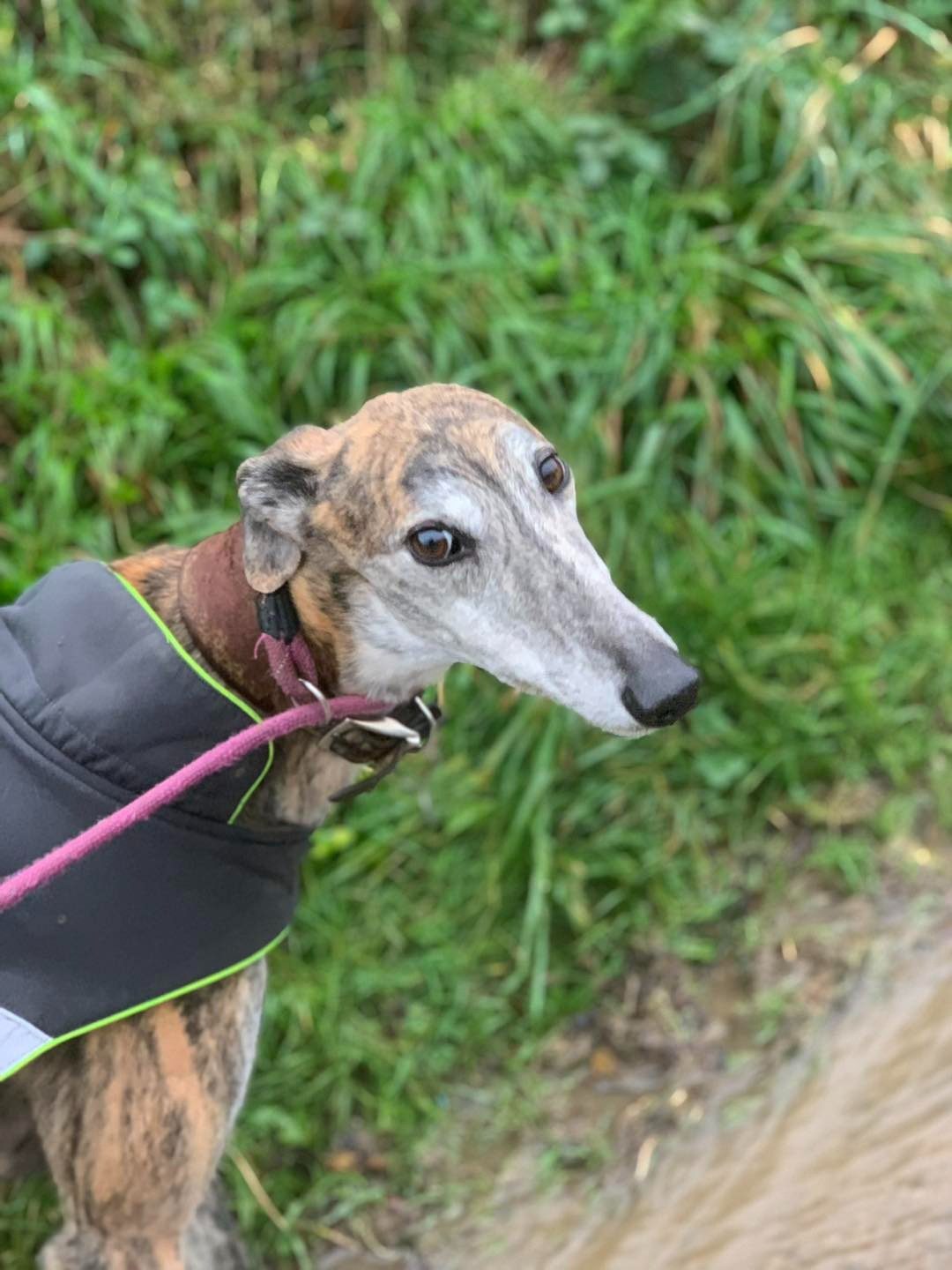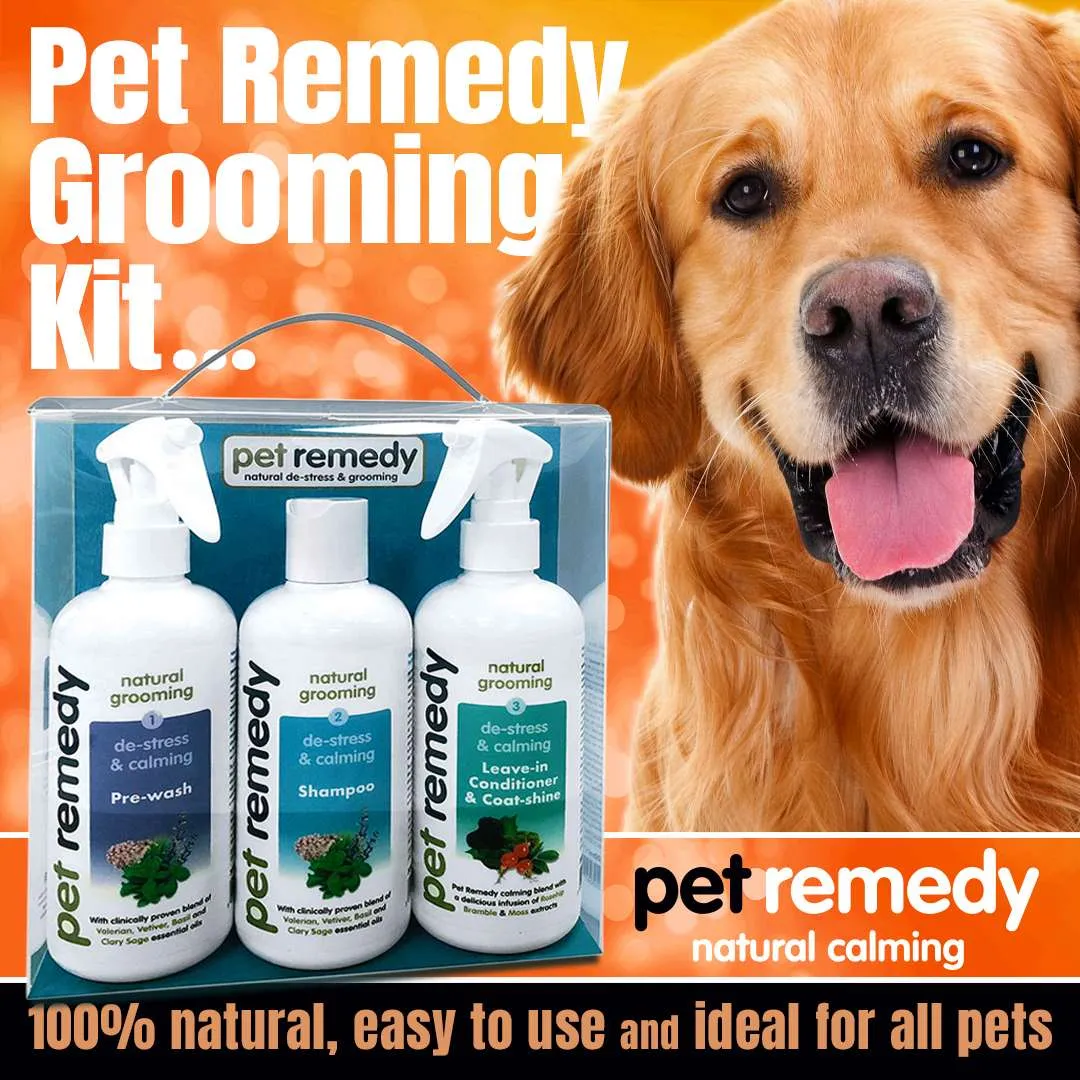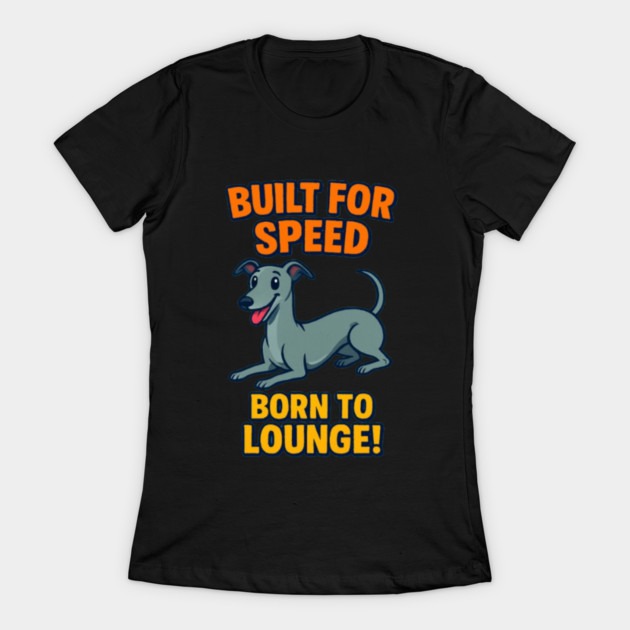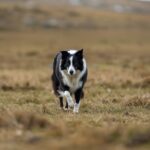A Friendly Guide for Owners in East Cornwall
Most greyhounds thrive with 30 to 60 minutes of daily walking, split into one or two gentle outings.
Their calm temperament means some are content with shorter strolls, while others enjoy a longer stretch when the weather and pacing suit their sensitive bodies.
It’s all about finding the right balance for your dog’s age, health, and unique personality.
That’s where local expertise matters—East Cornwall dog owners have access to dedicated dog walking services that tailor walks to each greyhound’s needs.
Choosing a professional dog walker takes the guesswork out of “how long can you walk a greyhound” and offers peace of mind, whether you’re after daily dog walks, group dog walks or puppy walking services.
This article will guide you through practical tips, health considerations, and how to make the most of local dog exercise services.
We’ll touch on everything from finding a reliable dog walker to understanding dog walking rates, so you can enjoy worry-free adventures with your pup.
If you need personal advice or help arranging walks, you can always Contact Paw-tastic Walks for friendly support nearby.
For background on the greyhound breed and its exercise history, the Greyhound Wikipedia page is a helpful resource.
Understanding Greyhound Walking Needs
Most greyhounds are often called “couch potatoes” for a reason—they love lounging around. But behind that relaxed exterior, they still need a healthy dose of walking.
Knowing how long you can walk a greyhound isn’t just about ticking a box for exercise. It’s about supporting their joyful temperament, their slim yet powerful build, and helping them feel content both mentally and physically.
Greyhounds are uniquely gentle, and their walking needs reflect that balance between relaxation and activity.
Typical Walking Duration for an Adult Greyhound
 Photo by Dasha Klimova
Photo by Dasha Klimova
For the question “how long can you walk a greyhound?” the sweet spot for most healthy adults lands between 30 to 60 minutes of walking per day.
Experts and seasoned owners often suggest splitting this into two gentle strolls, each lasting about 20 to 30 minutes.
That timing keeps their muscles toned and gives them a mental reset, without wearing them out. Greyhound exercise needs discussed by owners mirror this, showing most greyhounds thrive with these moderate, regular outings.
Here’s why this routine matters:
- Physical health: Keeps weight in check and supports joint health.
- Mental stimulation: Smelling, seeing, and hearing new things feeds their curiosity.
- Bonding: Sharing daily dog walks or group dog walks deepens your relationship.
For most owners, integrating regular walks with playtime and short training games offers even greater variety.
You might also try dog-friendly enrichment like tug toys for boosting energy and mood indoors.
If you’re balancing a busy schedule or seeking help during workdays, using dog walking services or finding a reliable dog walker for your daily routine keeps your hound happy and on track. Curious about safety and extra comfort for your outings in all weathers?
Read tips on walking your dog in the rain for extra peace of mind.
Adjusting Walks for Age, Health, and Energy Levels
Not all greyhounds have the same stamina. Just like people, their age, health, and personality can change what counts as “enough” walking.
Puppies, seniors, and those with health issues need special routines.
- Puppy power: Young greyhounds have softer joints and growing bones. Their walks should be shorter and more frequent—think of them as nature’s energetic toddlers! Using puppy walking services can help ensure puppies get the right start, with plenty of stimulation but no risk of overdoing it.
- Senior strolls: Older hounds may still love their walks, but they do best with gentler, shorter outings. Listen to their body language—stiffness, reluctance, or heavy panting means it’s time for a break. Helping your dog stay active as they age is about honoring their limits while keeping routines consistent.
- Special health needs: Greyhounds with arthritis or heart issues will need walks tailored to their abilities. A professional dog walker can spot when a break is needed or suggest alternative activities, like gentle sniffing strolls or light play.
For all ages, adjusting walk intensity and length makes a big difference. Here are some tips:
- Choose gentle routes with minimal hills.
- Keep an eye on the weather—greyhounds are sensitive to cold and heat.
- Always check your lead and harness; comfort matters for safe outings. For guidance on finding the right fit, see the best dog harness for large dogs.
- Ask a local dog walking service for custom advice if your hound’s needs change.
Whether you use pet walking near me searches or book with a trusted service, a reliable dog walker will provide detailed feedback and adapt your dog’s walks as needed.
If you want even more peace of mind, a GPS dog tracker can add an extra safety net.
A flexible, attentive approach works best for this thoughtful breed.
For more, the Greyhound Wikipedia page shares insights into their nature, making it easier to shape walks to your dog’s unique needs.
Tips for Safe and Enjoyable Greyhound Walks
Setting out on a walk with your greyhound in East Cornwall can be the highlight of both your days, but a safe, smooth adventure takes a bit of preparation.
Planning ahead gives you peace of mind and lets your dog enjoy every sniff, breeze, and friendly encounter.
Here are practical tips for making your daily dog walks or group dog walks safe, comfortable, and full of tail wags, all while keeping in mind the unique needs of the greyhound breed.
Choosing the Right Equipment for Greyhounds
When it comes to how long can you walk a greyhound, the right equipment is half the battle. Greyhounds have unique body shapes—narrow heads, deep chests, and delicate necks—which means regular collars might slip off or cause discomfort.
To prevent your dog from slipping out at the worst moment or developing neck problems, focus on these tools:
- Harnesses: A well-fitted harness is essential for greyhounds. Look for padding and an adjustable design to avoid rubbing or chafing. Front-clip harnesses are often a good choice for control and security, especially for enthusiastic or nervous walkers.
- Collars: If using a collar, try a martingale style that gently tightens without choking. This helps reduce the risk of escape if your hound spooks.
- Leashes: Choose a strong, comfortable leash—about 1.2 to 1.8 meters long. A standard flat leash gives better control than retractable types, which can tangle quickly if your dog changes pace.
For the best in comfort and safety, check out recommendations for the best dog harness for large dogs.
Dog exercise services and local dog walking professionals often have favorite harness models tested in real-world conditions.
Always check the fit before every walk—greyhounds are skilled escape artists if given an inch! A secure fit helps keep your daily dog walks worry-free and pleasant.
Weather Considerations and Local Routes
Cornish weather is famous for its unpredictability. One hour it’s sunny, the next brings rain showers or a cold breeze off the sea.
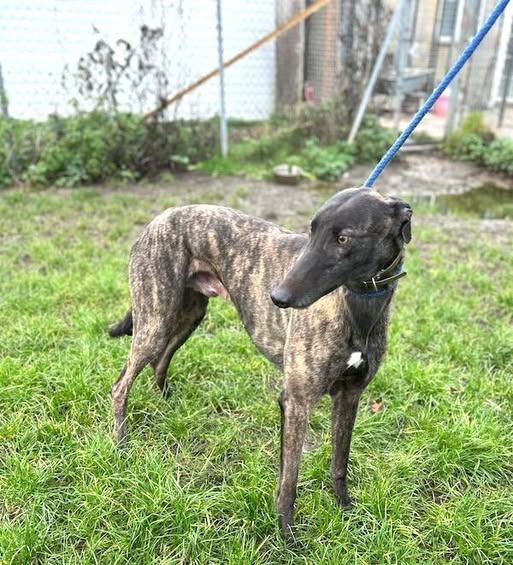
Greyhounds, with their thin skin and minimal body fat, feel temperature changes more than most breeds.
If you’re wondering, “can I walk my dog in the rain?” the answer is yes—with the right prep. Greyhounds often dislike getting soaked, but a quick dash in a light drizzle usually beats skipping exercise.
In heavy rain or bitter winds, shorten the walk or use a waterproof dog coat to keep your companion comfortable.
For tips on when and how to walk safely in wet weather, visit this guide on rainy walks.
In sunny or humid weather, time your walks in the early morning or evening. Always carry water, and use shaded paths when you can.
Some favorite East Cornwall walking spots for greyhounds include:
- Siblyback Lake – Flat, wide paths and gentle slopes.
- Kit Hill Country Park – Open spaces, manageable trails, and stunning views.
- Seaton Valley Countryside Park – Sheltered areas with wooded cover and accessible footpaths.
If you’re juggling a busy calendar or the Cornish mist has you hiding indoors, reach out for local dog walking or dog exercise services.
Professional dog walker support means your hound keeps their step count up, rain or shine.
Handling Hazards and Encounters with Other Dogs
Encountering loose or unfriendly dogs during a walk is stressful—especially for sensitive greyhounds.
Their gentle nature means they’re rarely the aggressor, but they can still be easily spooked.
Here’s how to manage tricky moments:
- Stay calm. Your body language can help reassure your greyhound.
- Give space. Cross the road or move out of sight if you spot a dog without a leash.
- Use your leash and voice. Keep your hound close, but avoid tightening the leash too much (it can add tension).
- Carry treats or toys. Use them as a distraction to lure your greyhound’s attention away from a potential threat.
For more in-depth advice on handling unexpected encounters, this resource on dealing with loose or aggressive dogs on walks is packed with actionable steps and reassurance.
Some greyhounds blossom in social settings, while others prefer quiet walks. If your dog enjoys canine company but feels uneasy around unknown dogs, try joining group dog walks. These supervised outings offer a safe place to learn social skills and benefit from shared experience.
Plus, it can make daily dog walks more enjoyable for shy or energetic dogs alike.
Building up your confidence (and your greyhound’s) makes every outing more relaxed. Want to learn more about dog social behaviours?
The Wikipedia article on dog socialisation offers helpful background.
Consistent practice, teaming up with a reliable dog walker, and joining friendly group walks can make every outing a success, even with the unique quirks of the Cornish countryside.
Enhancing Your Greyhound’s Walking Experience
Every walk brings a fresh chance for your greyhound to explore, connect, and thrive. Beyond answering “how long can you walk a greyhound,” enhancing your routine with group outings and enrichment activities turns each stroll into a bigger adventure.
Here’s how you can make these walks the highlight of your greyhound’s day—building social skills and keeping their clever minds busy.
Benefits of Group Walks and Socialisation
Joining group dog walks can do wonders for your greyhound’s happiness and well-being. While greyhounds love a good nap, they’re also social and curious by nature.
Walking with other dogs in a calm, managed setting builds their confidence and helps new or shy hounds come out of their shell.
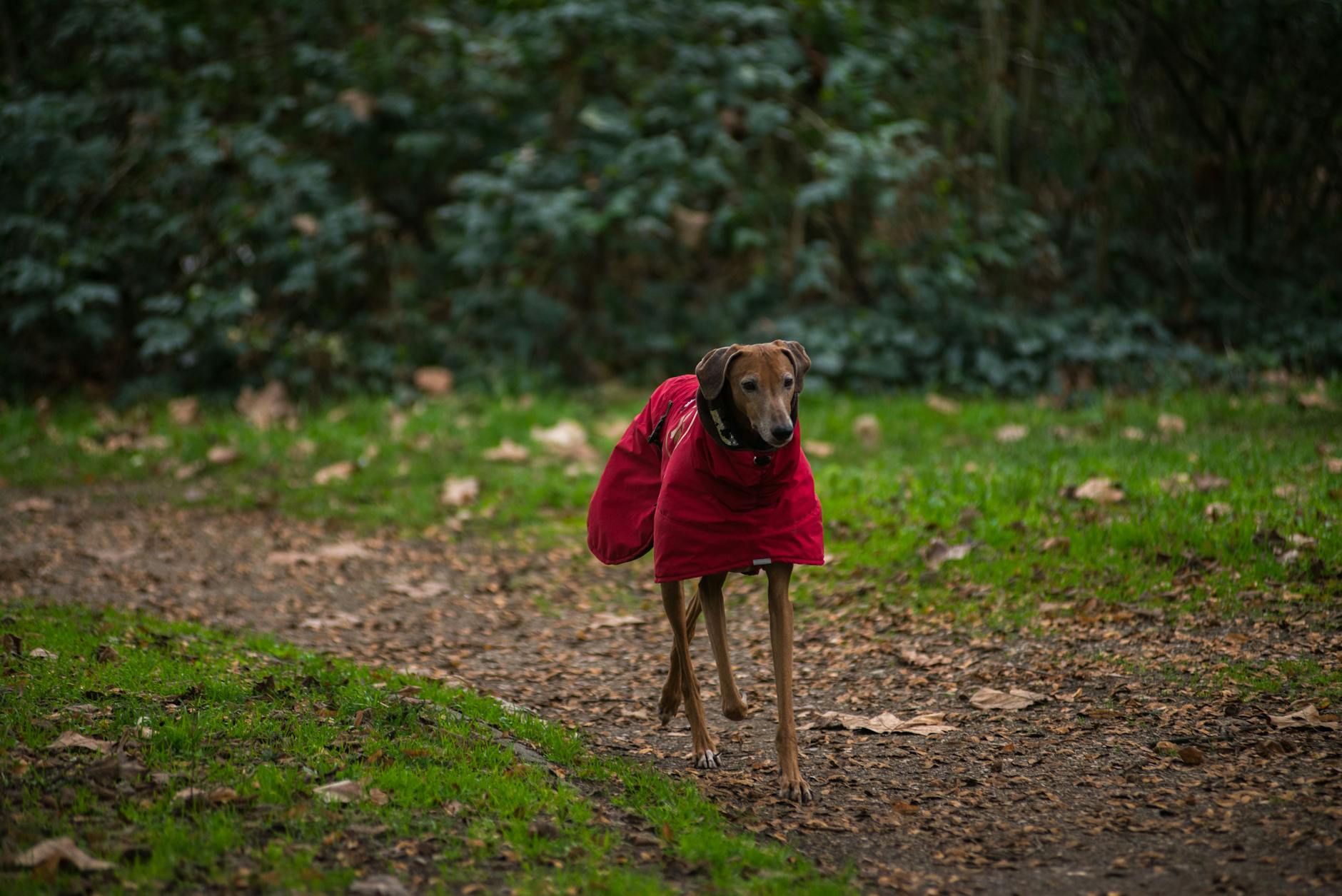
A professional dog walker can read dog body language and set a comfortable pace for all.
If your pup feels nervous around new dogs, walking as part of a group offers gentle introductions in a safe setting.
Group walks offer:
- More chances to play and learn dog etiquette.
- Confidence for those who are timid or newly adopted.
- Exposure to different people, smells, sounds, and landscapes.
- Support from other dog owners and chances for owner chats.
If you’re looking into dog walking services for group outings, ask about the group’s size, routes, and how new dogs settle in.
It’s smart to compare dog walking rates so you find a service that fits your budget and meets your dog’s needs.
For extra insight, this article on the benefits of group dog walks highlights how regular outings improve social confidence and provide vital exercise.
It’s like joining a book club, but with more tails and wagging!
Making Walks More Stimulating for Greyhounds
Greyhounds have sharp senses and quick minds. Letting them sniff, explore, and play turns a regular walk into something far more rewarding.
Mental stimulation helps with relaxation and lowers boredom—and it might mean fewer zoomies later at home.
Here are simple ways to boost your dog’s walk:
- Let them sniff: Allow time for “sniffaris” so your greyhound can explore new scents. Scent work is hugely enriching.
- Training games: Practice “sit,” “stay,” or “find it” using treats. This adds focus and fun.
- Toys and tug: Carry a favorite toy, or try a game with tug toys before or after your walk for a happy boost.
- New routes: Mix up your regular walks with fresh paths or hidden park corners.
- Short puzzles: Toss a few treats in the grass and let your greyhound hunt for them.
If you’re curious about more ideas, many local dog walking experts share clever tips or offer enrichment add-ons.
You can read this guide on tips for mentally stimulating dog walks for practical examples.
When you work with a reliable dog walker or try a local dog exercise service, talk through new activities or enrichment you’d like to add to your dog’s day.
They may also offer specialty options, like puppy walking services that combine beginner training with gentle walks.
For more technical background on canine enrichment, Dog cognition on Wikipedia provides insight into how clever your greyhound really is—reminding us all to keep those brains busy!
Small changes make a big difference for your greyhound’s enjoyment and well-being.
Mix in new smells, sounds, and friendly companions and you’ll see tails wag longer on every outing.
Finding the Right Local Walking Support
If you’ve ever wondered how long can you walk a greyhound and felt unsure where to turn for help, you’re not alone.
Many dog owners in East Cornwall want the best care for their hounds but feel a bit lost choosing local dog walking services. The good news? There are friendly, professional dog walkers right on your doorstep, just waiting to offer support tailored to your dog’s unique needs.
This section covers how to spot reliable services, ways professionals customize walks for greyhounds, and what to expect from quality care near you.
Assessing Experience and Reliability
Finding a reliable dog walker is a bit like searching for a new family friend—you want someone trustworthy, kind, and experienced.
Here’s how to check someone’s credentials before you trust them with your dog:
- Ask for recommendations: East Cornwall’s dog-loving community is a great place to start. Talk to friends or check local forums for honest reviews of professional dog walkers.
- Check qualifications and insurance: A professional walker should have public liability insurance and knowledge of dog first aid. Don’t be shy to ask.
- Meet and greet: Arrange a meeting with your potential walker. Watch how they interact with your dog. Does your greyhound look comfortable? A calm, affectionate approach is a must.
- Ask about experience: Greyhounds are unique. Look for walkers with specific experience in handling large breeds or ex-racing dogs.
A reliable dog walker should also communicate openly about your dog’s day—sharing updates, funny stories, or any concerns.
This helps build trust while making sure your greyhound is in safe hands every time. In a close-knit area like East Cornwall, word-of-mouth goes a long way.
Customising Walks to Suit Your Greyhound
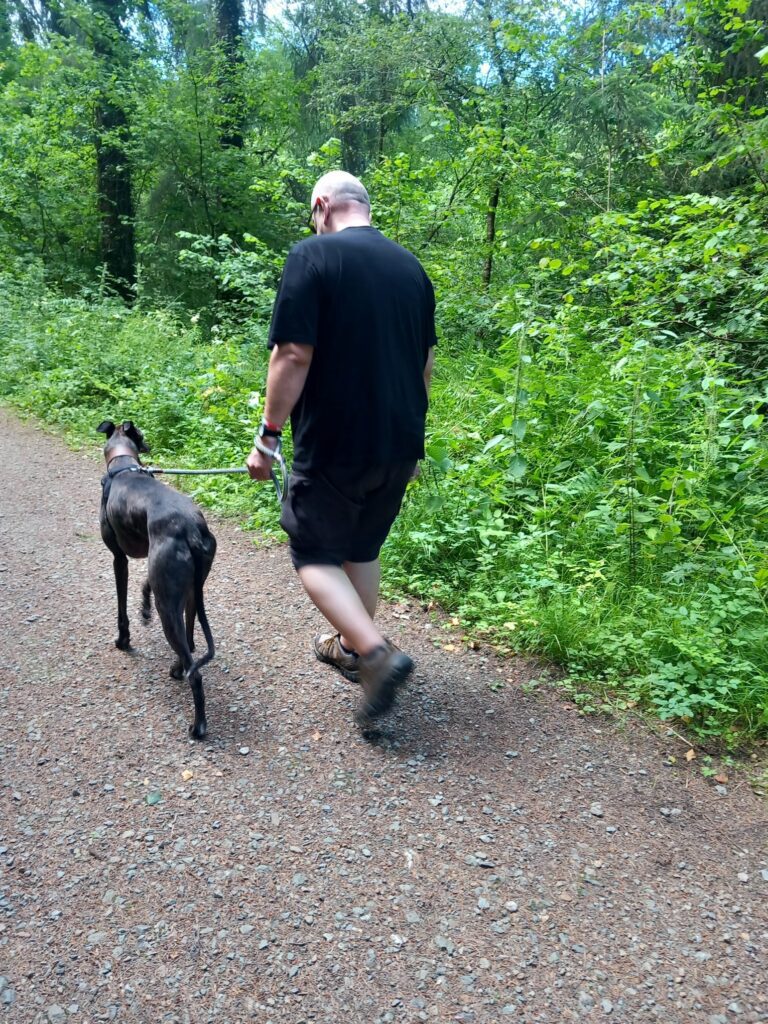
Every greyhound is different. That’s why professional dog walkers in East Cornwall know how long you can walk a greyhound safely changes based on personality, age, and energy.
Here’s how local dog walking experts tailor each outing:
- Route selection: Some greyhounds love people-watching on busier routes; others prefer quiet lanes or countryside paths.
- Walk duration: Professionals keep an eye on your dog’s stamina, planning shorter walks for older hounds or puppy walking services for young ones.
- Group or solo walks: Friendly pups might enjoy group dog walks for social time, while shy ones may do better alone or in a smaller pair.
- Special needs: Maybe your dog is nervous about rain or struggles with certain harnesses. A thoughtful walker adapts gear and pace so walks are always gentle and safe.
A good walker will also tell you about common walking mistakes and how to avoid them.
If you’re curious about fixing walking errors or want practical advice, you may enjoy these common walking mistakes and solutions for better walks.
What to Expect From a Local Dog Walking Service
When you search for “pet walking near me” or “dog walking services” in East Cornwall, you’ll find helpful options for every need.
Here are the typical offerings you can expect from high-quality local dog walking providers:
- Daily dog walks: Scheduled outings that provide consistent exercise and companionship while you’re busy or at work.
- Group dog walks: Most services offer small, well-matched groups to support socialization and safe play.
- Puppy walking services: Specialized walks with extra care for growing pups, including gentle introductions to new sights and sounds.
- Custom support: Walks for dogs with special needs, whether due to age, health conditions, or anxiety.
- Simple communication: Detailed feedback on your dog’s walk, with notes on mood, potty breaks, and fun moments.
You’ll also find flexible, affordable dog walking rates—sometimes based on walk duration, number of dogs, or special needs.
Wondering what makes these services different? Many use insured vehicles for pick-up and drop-off, warmth in cold weather, and harnesses for comfort. Others offer add-ons like GPS tracking and photo updates.
For a broader look at what dog walking covers, the Dog walking Wikipedia page provides a helpful overview of the industry’s background and benefits.
For comparison, you can also explore approaches for different breeds in posts like these German Shepherd walking tips.
In the end, the best dog walking services blend skill, kindness, and local insight to make sure each outing suits your greyhound perfectly—no matter how long you decide to walk.
Get This Great Greyhound Design Today!
Conclusion
Learning how long you can walk a greyhound means listening to your dog’s needs and adjusting to their age, health, and energy.
Most greyhounds thrive with daily dog walks of 30 to 60 minutes, but some may need less or enjoy a little extra with the right support. Regular, gentle outings make for a healthier, happier life and help deepen the bond between you and your hound.
Connecting with a professional dog walker or using trusted dog walking services brings extra assurance that every walk matches your greyhound’s personality and comfort level.
These services often adjust routines, choose calming routes, and even offer group dog walks or puppy walking services when extra care is needed. Quality care means peace of mind for you and a safe, joyful experience for your pup.
For more on safe practice, you may find Is Dog Walking Safe? especially useful.
If you are looking for a local dog walking specialist, or want advice on dog walking rates or custom dog exercise services, don’t hesitate to Contact Paw-tastic Walks.
Thanks for trusting your greyhound’s care to those who understand their unique needs. Every walk is a chance to build trust, joy, and good habits that last a lifetime.
How will you make your dog’s next adventure special?
For a deeper look at the science behind dog exercise and well-being, the Dog walking Wikipedia page is a valuable resource.
